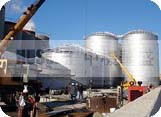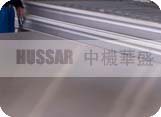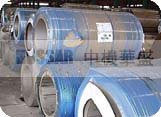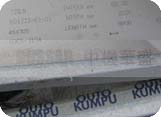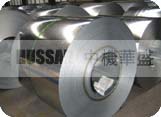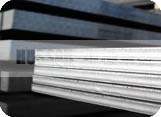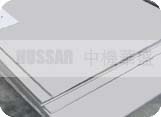| Inconel 600 Alloy(UNS
N06600) Alloy 600 (UNS N06600)
is a nickel-chromium alloy designed for use from cryogenic to elevated temperatures
in the range of 2000F (1093C). Alloy 600 is non-magnetic and readily weldable.
The alloy is used in a variety of corrosion resisting applications. The high nickel
content of Alloy 600 provides a level of resistance to reducing environments,
while the chromium content of the material provides resistance to weaker oxidizing
environments. The high nickel content of the material provides exceptional resistance
to chloride stress corrosion cracking. -------------------------------------------------------- General
Properties
Alloy 600 (UNS designation N06600) is a nickel-chromium alloy
designed for use from cryogenic to elevated temperatures in the range of 2000F
(1093C). Alloy 600 is nonmagnetic and readily weldable. The
alloy is used in a variety of corrosion resisting applications. The high nickel
content of Alloy 600 provides a level of resistance to reducing environments,
while the chromium content of the material provides resistance to weaker oxidizing
environments. The high nickel content of the material provides exceptional resistance
to chloride stress corrosion cracking. -------------------------------------------------------- Applications
Chemical
and food processing equipment
Paper mill and alkaline digesters
Heat
exchangers
Heat treating mufflers and retorts -------------------------------------------------------- Standards
ASTM..........................
B 168
ASME.......................... SB 168
AMS ...........................
5540
Federal or Military....... MIL-N-23226
MIL-T-23227 -------------------------------------------------------- Corrosion
Resistance
The high nickel content of Alloy 600 provides good resistance
to moderate levels of reducing conditions. The nickel content of the alloy renders
the alloy extremely resistant to chloride stress corrosion cracking. Alloy 600
is one alloy used in solutions of magnesium chloride. Similarly, the chromium
content of Alloy 600 provides resistance to weak oxidizing environments. In this
respect, Alloy 600 is an improvement over Alloy 200 (commercially pure nickel).
In strong oxidizing solutions like hot, concentrated nitric acid, Alloy 600 has
poor resistance. Alloy 600 is relatively unattacked by the majority of neutral
and alkaline salt solutions. It is used in some caustic environments. Alloy 600
resists steam and mixtures of steam, air, and carbon dioxide. The alloy has excellent
oxidation resistance to about 2100F (1149C). The nickel content of the alloy renders
it subject to attack at elevated temperatures in sulfur-containing atmospheres,
however. -------------------------------------------------------- Chemical
Analysis
Typical Analysis (Weight %) C
Mn S Si Cr Ni + Co Fe Cu
0.05 0.25 0.002 0.20 15.5 Balance 8.0 0.10 -------------------------------------------------------- Creep
and Stress Rupture Properties
Typical stress rupture properties of Alloy
600 are presented below in comparison to some other materials. The data indicate
that Alloy 600 has modest load carrying ability in the temperature range in which
creep and stress rupture are design criteria. -------------------------------------------------------- Heat
Treatment
Alloy 600 is not hardenable by heat treatment. The alloy can
only be strengthened by cold working. Annealing is conducted to soften the material
after cold working operations. Softening begins at 1600F (871C) and can be conducted
to about 2100F (1149C). At temperatures of 1800F (982C) or higher, grain growth
will occur rapidly. However, very short time at 1900F (1038C) may be used to soften
the material without producing undue grain growth. Slow cooling or quenching produces
approximately the same hardness in Alloy 600. -------------------------------------------------------- Processing
Cold Forming
Alloy 600 exhibits the excellent cold forming characteristics
normally associated with chromium-nickel stainless steels. The high nickel content
prevents the austenite to martensite transformation which can occur when Alloys
301 or 304 stainless steels are cold formed. The alloy has a lower work hardening
rate than Alloys 301 or 304 and can be used in multiple draw forming operations
where relatively large amounts of deformation occur between anneals. If a high
temperature anneal is conducted on the Alloy 600 to produce a relatively large
grain size for elevated temperature properties, extensive forming produces a visibly
undulated surface called “orange peel.” This surface characteristic is produced
by the large grain size and is usually considered detrimental to the properties
of the material. -------------------------------------------------------- Welding
Alloy 600 can be joined by the standard resistance and fusion welding processes
used for the stainless steels. A number of welding rods and wires are commercially
available for joining Alloy 600 to itself and other materials. Since the alloy
forms a tightly adhering oxide, which can be removed only by grinding, inert gas
shielding is desirable. | 
